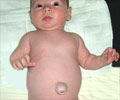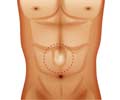A new minimally invasive sports hernia repair could prove a boon to athletes. It helps healing quickly and gets athletes back in the game 3 times faster than the traditional repair.
A new minimally invasive sports hernia repair could prove a boon to athletes. It helps healing quickly and gets athletes back in the game 3 times faster than the traditional repair, according to a new study presented today at the American Orthopaedic Society for Sports Medicine's Specialty Day in New Orleans, (March 13). Sports hernia were often difficult to diagnose and prior to this new repair had a lengthy rehabilitation time. Professional football players such as New England Patriots Tom Brady, Philadelphia Eagles Donovan McNabb and Kevin Curtis, and New Orleans Saints Jeremy Shockey have all suffered sports hernias over the past few years
"This injury has always been difficult to diagnose and treat because it wasn't clear what was causing the pain," said Gregg J. Jarit, MD, Sports Medicine Fellow at the University of Virginia. "But the key to success in this new procedure is identifying where the pain is coming from, which we believe is frequently a nerve compression."Sports hernia repair traditionally focused on a surgery that tightened the entire pelvic floor, resulting in a lengthy recovery time, according to the study. The new minimally invasive method, pioneered by Dr. Ulrike Muschaweck of Germany, involves a tightening of a smaller area of pelvic weakness and alleviating the genitofemoral nerve compression. The specific area to be repaired is found pre-operatively by hi-definition ultrasound.
In the study, 16 patients who had the traditional sports hernia repair and a second group of 10 patients with the newer, minimally invasive repair were interviewed and their outcomes regarding return to work or sport, feeling "back to normal," overall satisfaction and complications. Patients with the new repair returned to work or sports at an average of 4.5 weeks, while those with the traditional repair returned at an average of 16.5 weeks. Those who had the new repair felt "back to normal" at an average of 5 weeks, while the traditional repair group felt "back to normal" at an average of 20 weeks. Overall satisfaction and complications were similar between the two groups.
The American Orthopaedic Society for Sports Medicine (AOSSM) is a world leader in sports medicine education, research, communication and fellowship, and includes national and international orthopaedic sports medicine professionals. The Society works closely with many other sports medicine specialists, including athletic trainers, physical therapists, family physicians, and others to improve the identification, prevention, treatment, and rehabilitation of sports injuries.
Source-Medindia
GPL











